Making the "Blackjack" sculptures.
Initially, I produced very basic sketches, both in order to formulate my ideas, and for presentation to a foundry for rough estimates of costs. These were drawn with a ball-pen. Since the Virgin and Child necessitated the juxtaposition of two figures, I then produced a small rough wax sketch, in order better to work out how the two figures might relate three-dimensionally. This was then followed by two more detailed pencil sketches, derived from this.
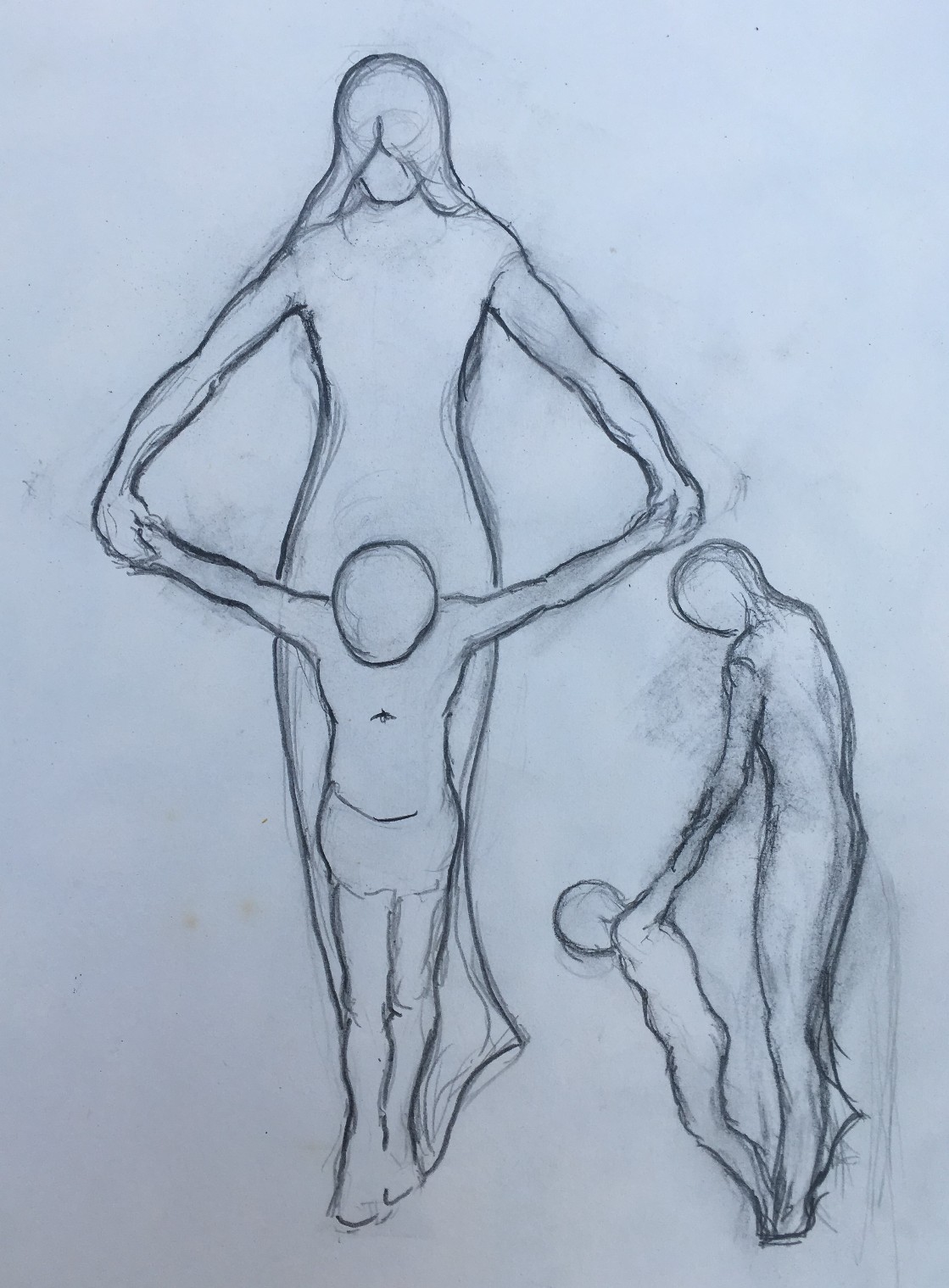
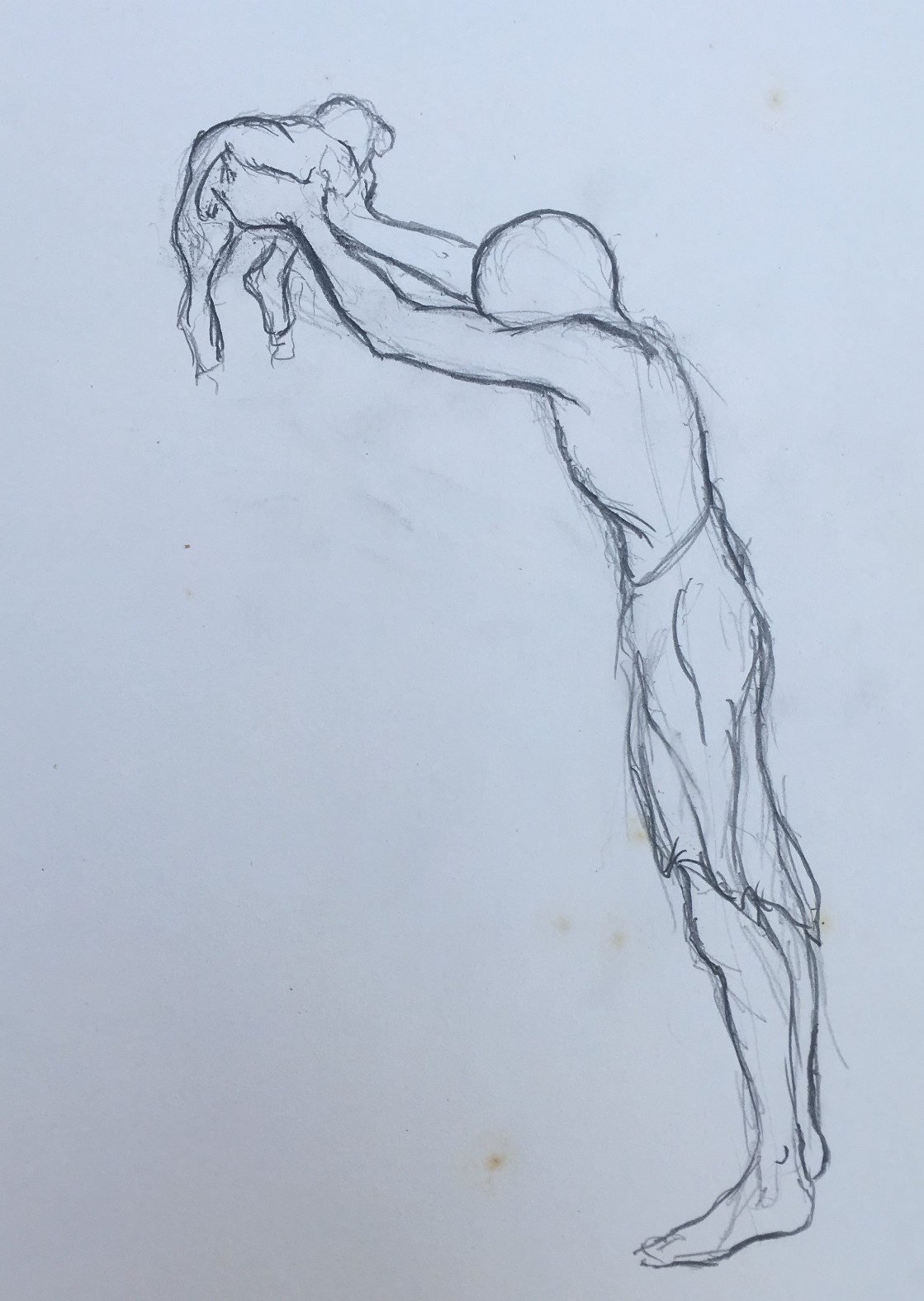
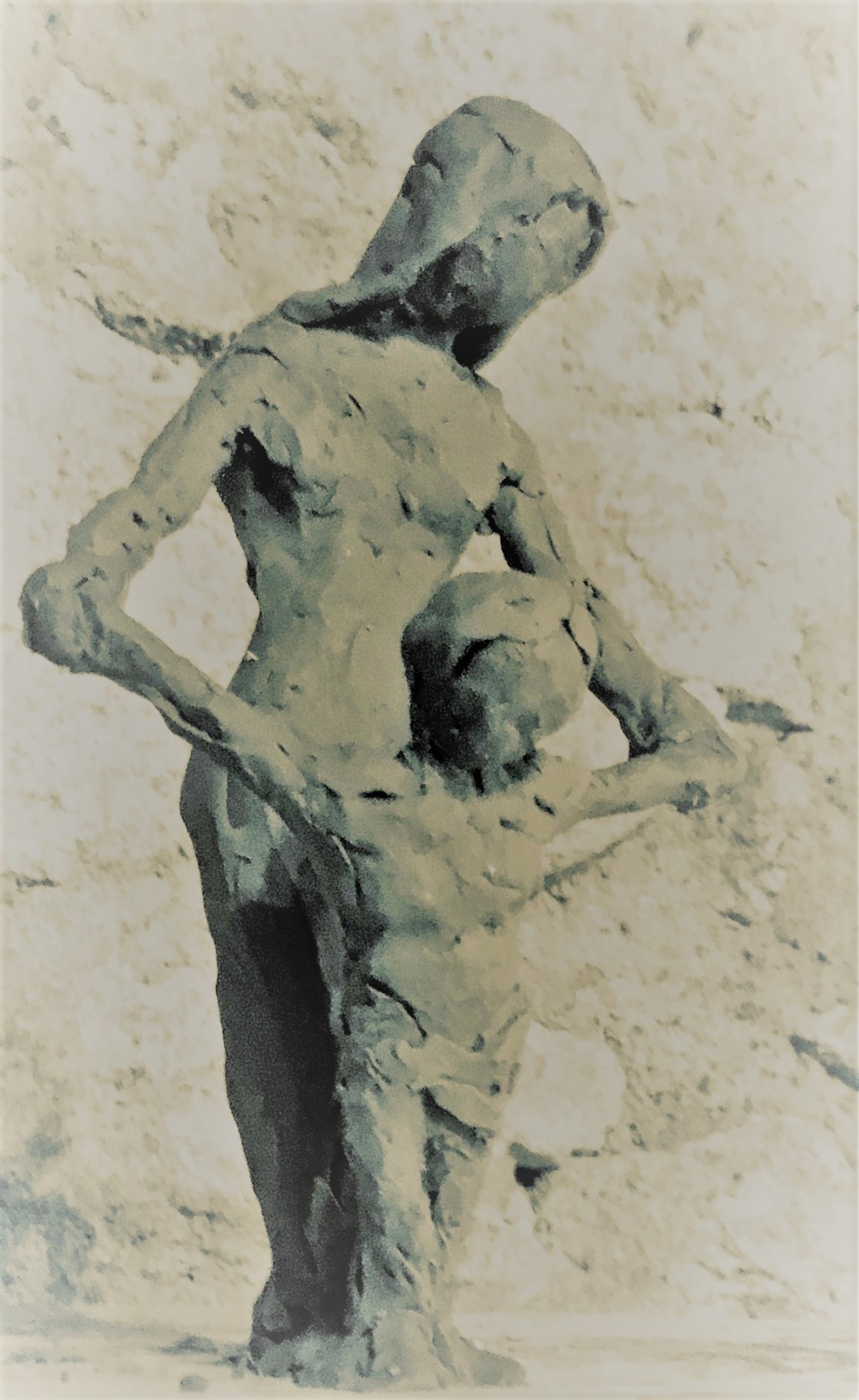
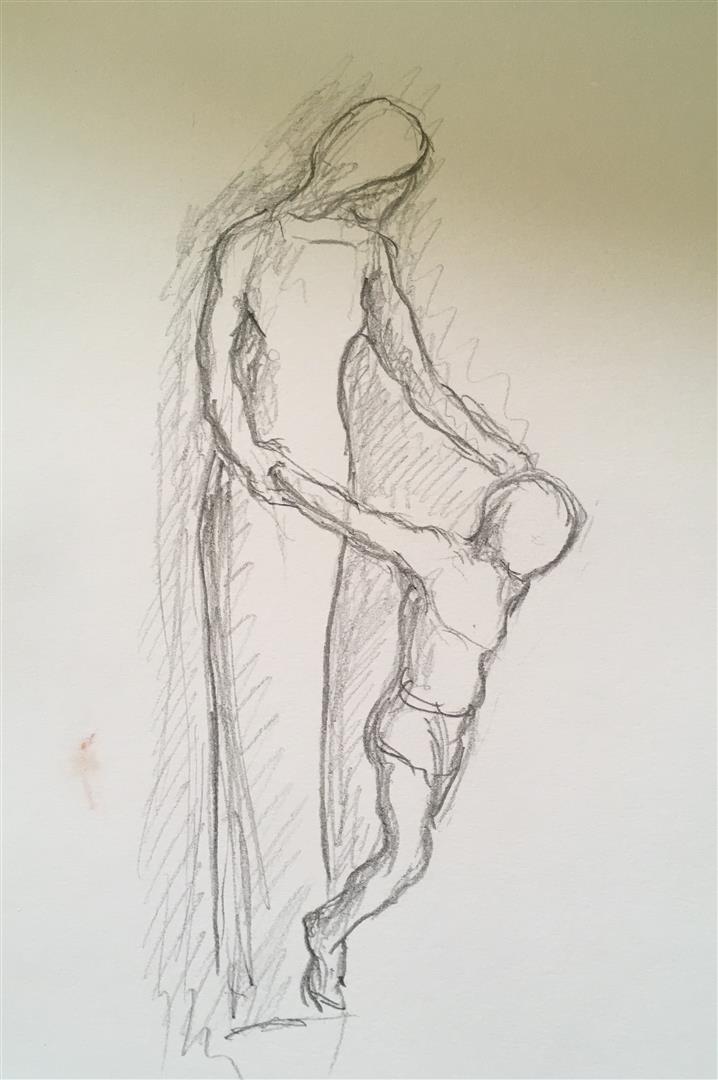
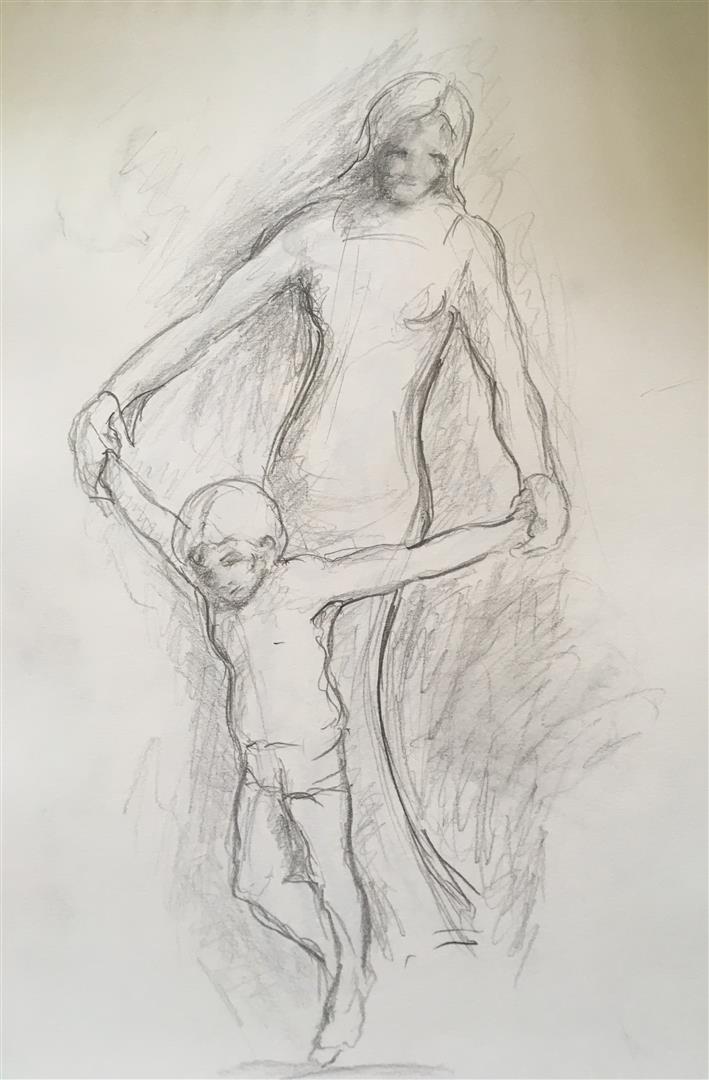
At this point, I was happy to produce clay maquettes (detailed scale models) of both Virgin and Child and St. John, which I then cast in bronze resin, which are now displayed in the Trinity Chapel within the church.
(February 2020)

Because of Covid 19, there has been somewhat of a break before we have again moved forward with the construction of Saint John. The first stage was to produce an armature of welded tubular steel and aluminium wire, around which the basic form of John was constructed with wire-netting. The clay was attached to this, gradually building up the form, in the process which you can see in the gallery below.
(November 2020)
The next picture gallery shows the creation of the mould. The first image shows me brushing the initial coat of rubber onto the clay. The clay was then completely covered in rubber, which was applied in successively thicker coats. John's head then acquired a "halo" of plastic shim to create a seam between the halves of the mould, and this was then extended to create all the seams where the mould would be divided. Once the shim was in place, it was covered in rubber, and small rubber squares stuck on to the mould surface as location pieces to hold it in place within a fibre-glass support case. The final pictures show me applying pieces of fibreglass and the completed fibre-glass case on top of the rubber. The last image is of the various sections of the mould once it was dismantled, with the rubber held in place within the support cases. John now no longer exists, except as a void waiting to be filled.
(December 2020)
At this point, having completed the clay and the mould of Saint John, I had intended to join my wife and son at our French home for Christmas. However, the virus has again altered my plans, as it has for so many people, and as with others, my family and I have had to be apart. I therefore decided to start on the Virgin and Child earlier than I had intended. The clay is now complete, and I have started work on the mould. The next gallery shows the work from armature to completion of the clay. In the first image, the metal frame outside the armature represents the position of the niche within which the final sculpture will be placed.
(January 2021)
And below is a timelapse video of the claywork for the Virgin.
My silicon rubber moulds for both John the Baptist and the Virgin and Child are now with the London Foundry Bronze Age, which has taken wax casts from them, for preparing their own moulds in a ceramic cement ready for making the final casts in bronze. The picture below shows these wax casts with members of the commissioning committee, Canon Graham Morris, Meg Blumsom and John Tiffney, taken at the inspection of the waxes.
(April 2021)
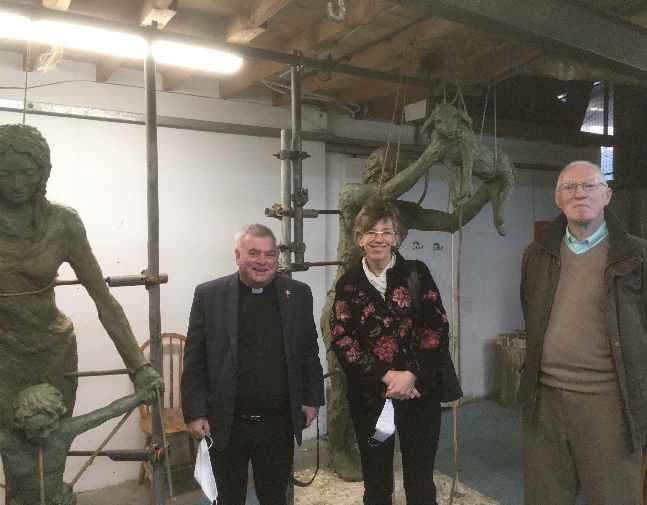
The following picture galleries show the foundry work. This is another example of how sculpture is a joint venture. I have said elsewhere that I believe art should be a joint creation of the artist and the people for whom he is working, but it is more even than that, and I feel that so often the skill and artistry of those in the foundry is overlooked in the finished product. Here is a real team of artists and skilled craftsmen (and women!) who work together with the sculptor in bringing about the realisation of his ideas.
The first gallery shows the wax castings that the foundry has taken from my silicon rubber moulds (which can be seen in the background). The initial images show the wax casts supported and roped within a metal framework, and the later ones show these casts being cut into sections in order for the foundry to make its own moulds for casting in bronze.
The next gallery shows the sections of wax being fitted with wax sprue which will form runners and risers for the passage of molten bronze, and the escape of the air which it will displace. The broad rounded pieces will become the funnels into which the bronze will be poured. The final image is of the torso of St. John suspended over the area where a ceramic cement for the foundry's moulds will be applied.
The first images in the next gallery show the ceramic cement, which will form the mould for the bronze, being painted on to the wax sections. Once this is completed, the wax is melted out (hence the "lost wax process") to leave a void into which the bronze will enter. The final images are of bronze being poured into the various sections of ceramic moulds which are held in a sand-pit.
(May 2021)
The following pictures show the burnishing and finishing work to the bronze surface of the Virgin and Child after the various sections had been welded together and fettled (remains of bronze sprue from the runners and risers removed). St. John is shown firstly standing ready for the next process, of patination, followed by the application of the initial dark coat of of potassium sulphide, applied to the heated bronze. After being polished to reveal highlights, a second coat of ferric nitrate is applied, again polished away to give a finish that gives further definition and colour to the hgh and low points of the sculpture's surface, as shown in the final photograph. Patination of each piece took two days..
(July 2021)
At last we have arrived at the installation. The following gallery begins by showing the sculptures arriving at the church, where they were placed inside the tower for a week, allowing people the opportunity to see them close up before they were winched aloft and fastened within the niches by the team of experts from Artful Logistics Colour photos courtesy of Steve Fearn; black and white by Alastair Forbes
(August 2021).

